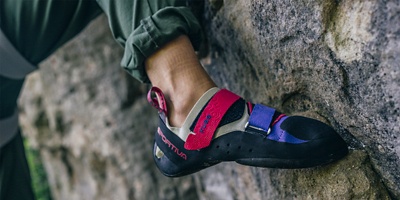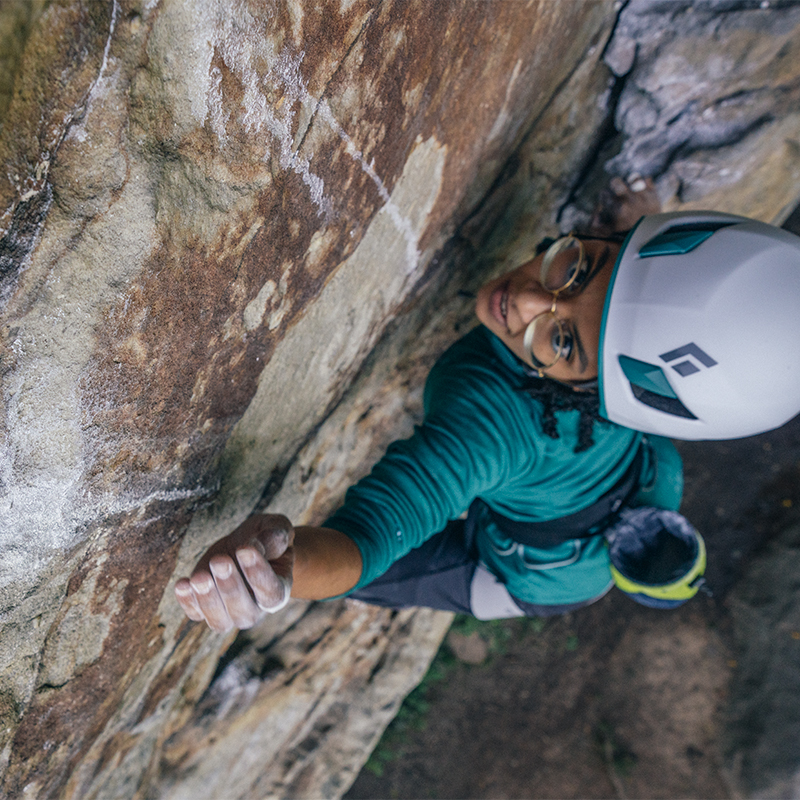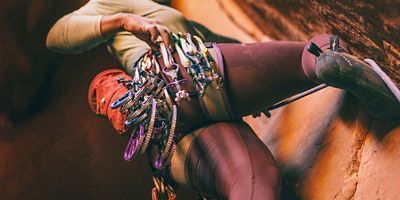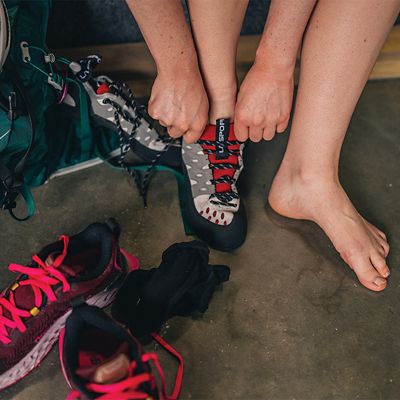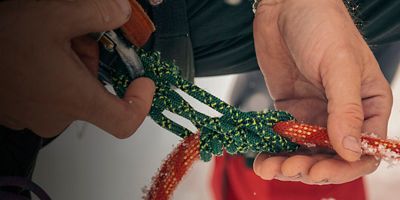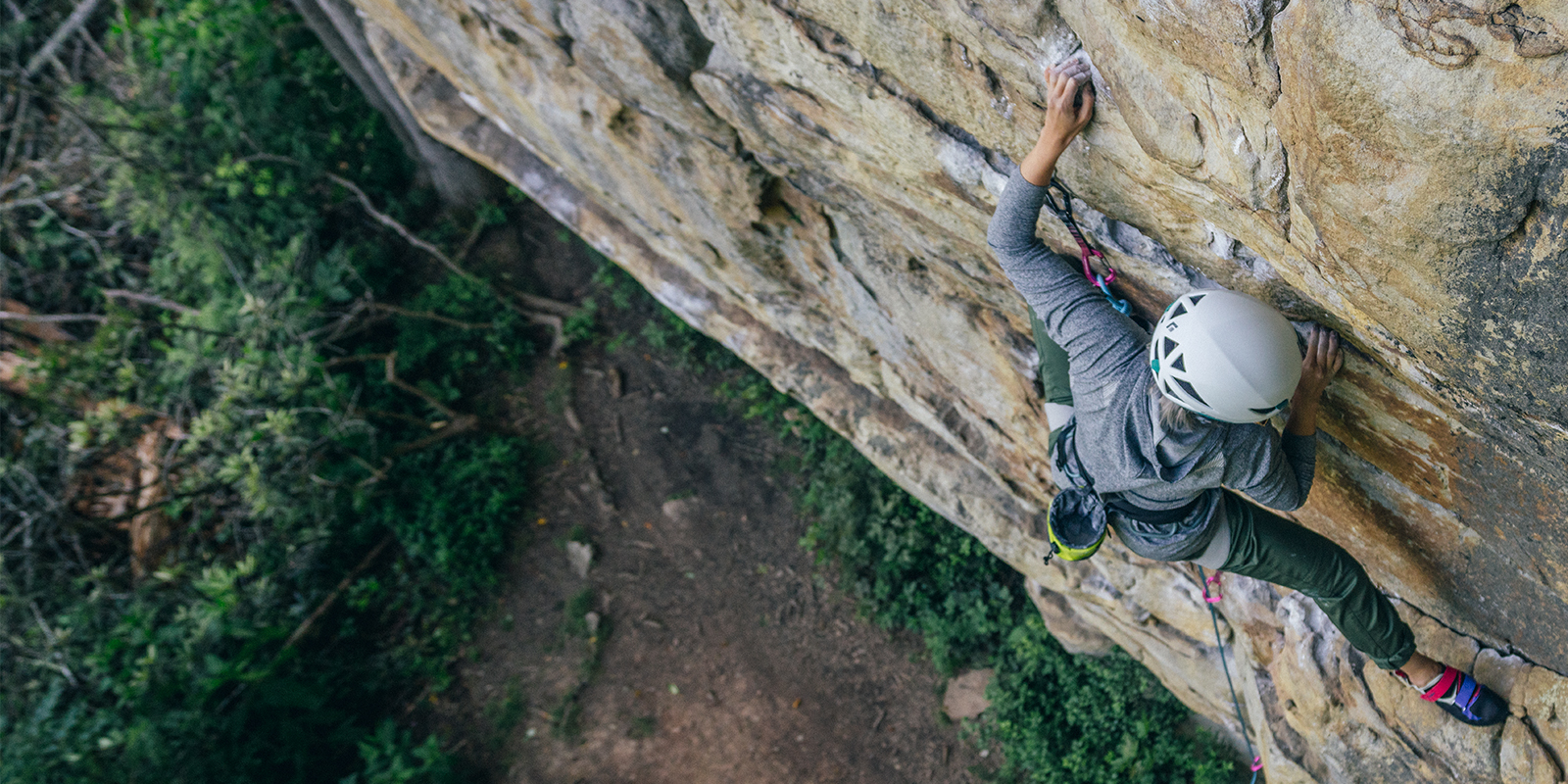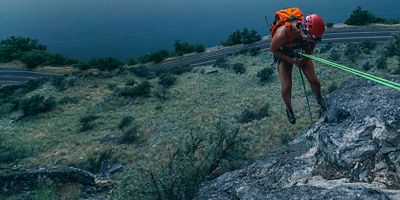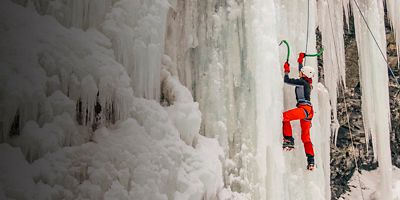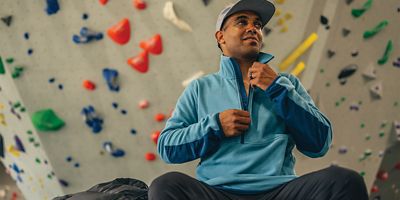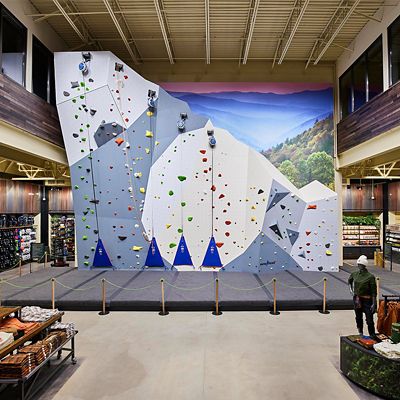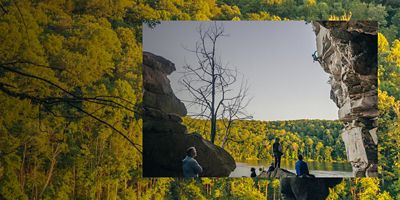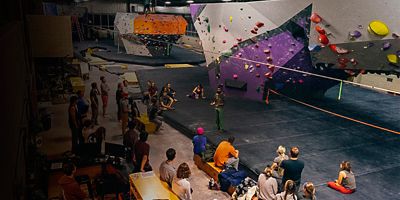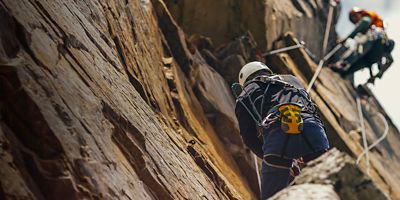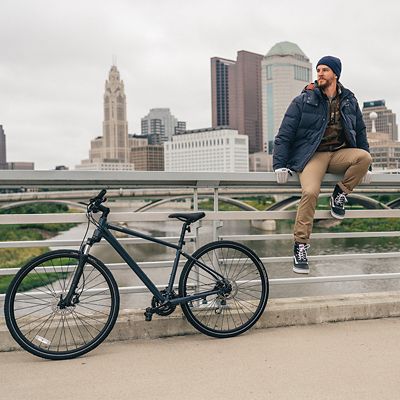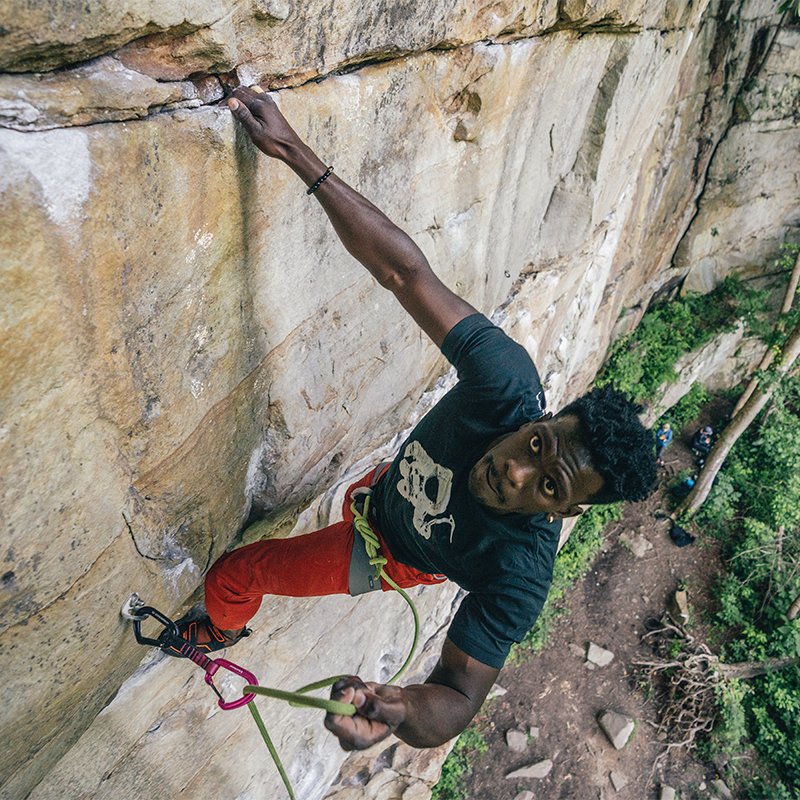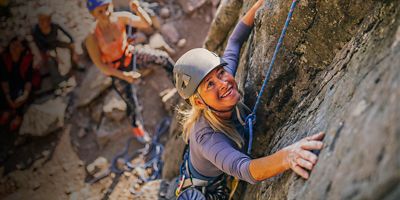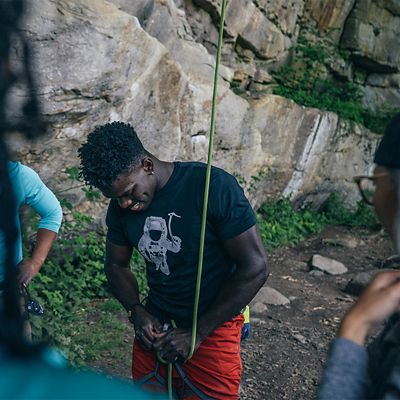If you start asking around, you’ll probably hear some dubious recommendations when it comes to buying climbing shoes. Maybe you’ve been told you need a super-aggressive downturned shoe. Or that lace-ups are always better. Or that if your feet don’t hurt, the shoes aren’t tight enough—no pain, no gain.
The good news is that these are all misconceptions. When it comes to buying your first climbing shoe, comfort is paramount. There are dozens of shoe styles available, and every climber has different needs—no matter what you hear at the gym.
Get the right shoes with this guide to what’s available, how to properly size climbing shoes, and how to buy a pair that’s perfect for your needs.
Types of Climbing Shoes
Climbing shoes come in a variety of styles, but shape and stiffness are the two factors you want to pay attention to most.
Shoe Shape
Neutral Climbing Shoes: These shoes have a “flat” appearance—the bottom of the shoe lies flush against the ground. They tend to require less break-in time, closely mimic street-shoe sizing, and remain comfortable over long days, especially on multi-pitch routes. They’re also great for crack climbing.
Aggressive Climbing Shoes: These shoes are more downturned, or hook-like, in appearance. They’re often better for technical climbing with small footholds and provide more purchase on overhanging routes. Aggressive shoes also tend to require more break-in time.
Moderate Climbing Shoes: This category, not surprisingly, falls somewhere in between. They’re jacks of all trades but usually, as the saying goes, masters of none. These can be a great option for intermediate climbers, or climbers who spend a lot of time in the gym or on varying terrain.
Shoe Stiffness
Soft: These shoes have a squishy feel. To test, put your thumb along the inside edge of the forefoot of the shoe and your fingers along the outside edge. Squeeze. If the forefoot folds lengthwise into a taco, you’ve got a soft shoe. Soft, “gummy” shoes conform to your foot and mold to the rock, making them a great choice for bouldering, slab climbing, or other styles that require “pasting” your feet against the rock to produce friction.
Stiff: These shoes have a plate of rigid material, usually plastic, under the forefoot. They’re a great choice for “edging” or standing on tiny holds on vertical rock. Stiff shoes can also be a good choice for shorter climbers, as they allow the climber to stand up higher on small footholds (picture a ballerina en pointe.) Stiff shoes are often preferred for rigid, slippery rock types like limestone.
Climbing Shoe Materials
Leather: This is generally considered a higher-quality material and tends to last longer than synthetic. The downside: It stretches more over time unless the shoe features a wide swath of rubber over the toe or a non-leather lining material to reign in stretch.
Synthetic: Shoes made with synthetic materials also break in a bit but mostly retain their out-of-the-box fit. The downside: They tend to smell worse over time.
Closure System
Many climbing shoes come in two versions: a lace-up and a hook-and-loop closure (like Velcro). Laces allow a more custom fit, but they’re harder to get on and off. Hook-and-loop tabs tend to be better for gym climbing, sport climbing, or bouldering when you’re frequently in and out of your shoes.

